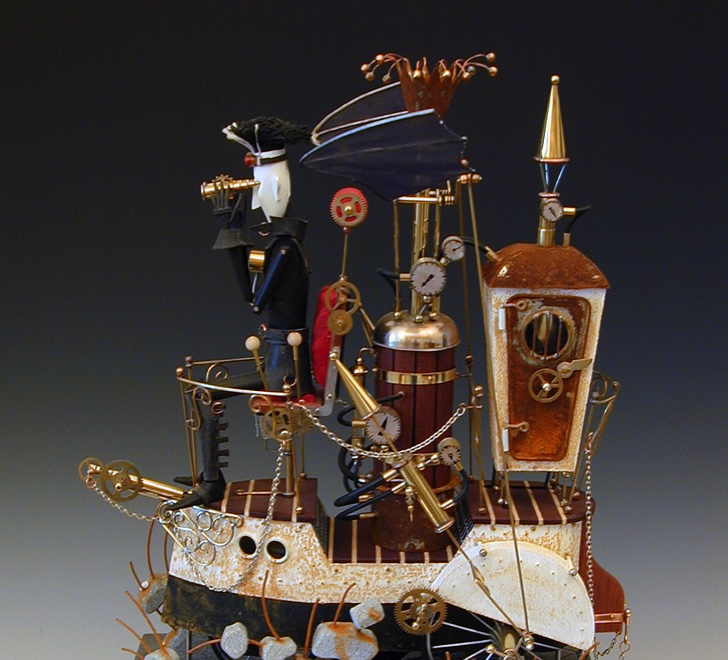For many people the word automaton conjures up slightly disturbing images of monstrous mechanical creatures with zombie-like movement. For the rare few who are familiar with the elaborately complex clockwork figures created in the Golden Age of Automata in the latter half of the nineteenth century, the word still does not seem to apply.
Automata hardly seems the appropriate word to characterize the charmingly whimsical mechanical toys which constitute the contemporary art. But it’s the word we’re stuck with so it will just have to do.
The contemporary automata movement began in the last quarter of the twentieth century and is predominantly a British phenomenon. It is characterized by colorful, witty creations that delight and amuse the viewer.
Contemporary automata are distinguished from their antecedents in three important ways. First, and most importantly, present day works are no longer propelled by clockwork, relying instead on the interaction of the viewer who must operate a crank or other device to animate the piece. Secondly, the mechanical workings are exposed, or even flaunted, in the belief that seeing how something works is part of the fun. Lastly, there is little attempt to portray realism. The figures are quirky, playful, and often cartoonish.
The examples offered on this website are examples from my personal collection. They are mostly by British makers with a number of notable exceptions. I hope you enjoy them as much as I do.
Michael Croft
AUTOMATA (plural form of automaton) are mechanically-operated figures, often of a human or an animal and usually smaller than life-size. They are sometimes capable of performing multiple complex movements and so constructed as to seem to move as if by their own power.

